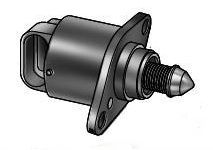Hi,Anyway after a butt puckering moment (rear wheel locked) on the way to work this morning I have decided to get my ABS unit sorted.
I understand this is a black box and can't be fixed? The ABS light is not lit up and ABS is not activating
If I am buying second hand - can I get a later model unit? if so which years are the same as the 2003 model (currently on EBay are pumps from 2006 & 2008)?
Cheers
XP@,
At the risk of actually answering the question posted, I see that the 2004-2005 ABS units are the same. In the 2004 Parts Breakdown linked below, click on the Part NAME, and then scroll down to see all the models and years which carry that part. I can find no ABS for the 2003, but I
think the 2003 and 2004 are mostly the same bike. Before you buy anything, can you actually find the ABS hardware installed on that bike? On the bike's VIN plate, under the steering head, you can find the actual year of manufacture for the bike (no matter what the paperwork may say).
https://www.2wheelpros.com/oem-parts/2004-yamaha-fjr1300abs-fjr1300as-electrical-3-assembly.html
Cheers,
Infrared























































